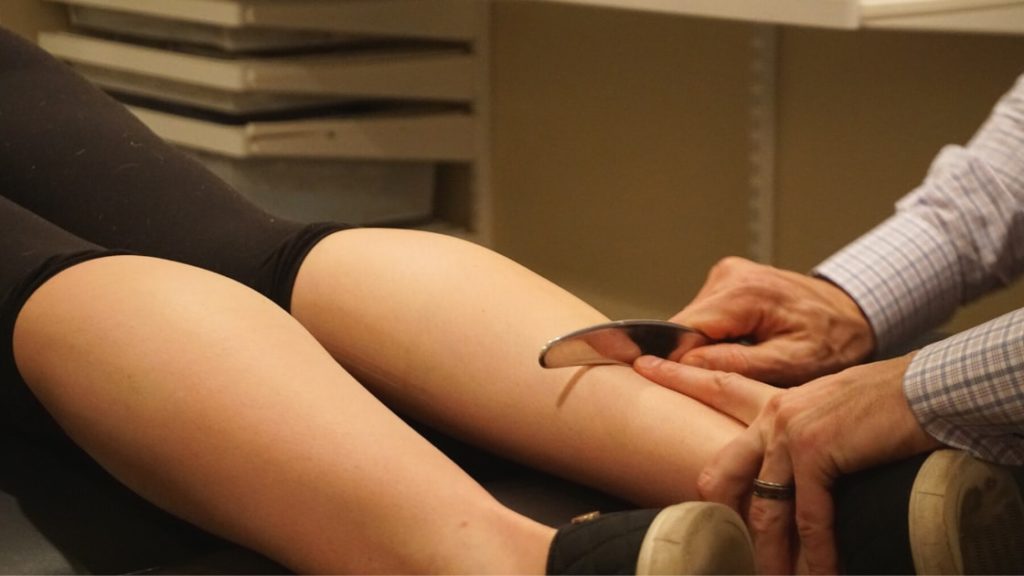What Is a Muscle Adhesion and How to Treat It?

You’re walking back to your car after a massage, and through the haze of bliss you think about what the therapist shared with you in the post-consultation. She mentioned finding some adhesions in your trapezius and rhomboid muscles that are limiting the range of motion in your scapula. You nodded along, but now you realize you’re not totally sure what that means. What exactly is an adhesion? you think, And what should I do about it?
What Exactly Is a Muscle Adhesion?
Sometimes healthcare jargon can be about as clear as coffee, but in truth much of it makes a lot of sense once you know the etymology (word origin). To take for example the trapezius and rhomboid muscles mentioned above, both muscles get their name from the geometric shape they resemble, i.e. a trapezoid and a rhombus. The same is true of adhesion; this word is a noun derived from the verb adhere, which means, “to stick fast to (a surface or substance).”
Adhesion in the Tissues of the Body
With this in visual in mind we can begin to imagine what an adhesion in the tissues of the body might look like. If you’re picturing muscle fibers and connective tissues glued together in abnormal formations you’re spot on. You can think of it as internal scar tissue. This generally occurs after an injury, surgery, or microtrauma (more jargon meaning small tears in muscles, often from overuse).
As part of the rebuilding stage of healing, the body connects adjacent structures together in order to seal and support the wound. However, the new tissue is overlaid onto the old tissue in a haphazard, crisscrossing manner, which is usually stiff and protective. This is why you often encounter less joint mobility after injuries, surgeries, or overuse strains.
What Should I Do About Muscle Adhesions?
Adhesions are actually quite receptive to manual therapies such as massage. They are part of our soft tissues, which means that they are somewhat malleable, can be manipulated, and even possibly realigned.
One technique in particular, called cross-fiber or transverse friction works well to address the slapdash “organization” of scar tissue, whether internal or external. It can be a bit uncomfortable depending on the location of the injury, but never unbearable.
Call for more information about how a therapist here at Moyer Total Wellness can help you reduce joint stiffness and increase range of motion.

Emily Arnold
Emily Arnold, Licensed Massage Therapist
Emily Arnold is a Licensed Massage Therapist at Moyer Total Wellness. She holds a bachelor's degree in Spanish and Intercultural Studies. But it wasn't until Emily attended the Costa Rica School of Massage Therapy that she really discovered what she was supposed to be doing. She believes the human body is an astounding self-tuning instrument and her goal is to help people achieve homeostatic balance through stress regulation, mindful posture, health education, and intentional touch.
